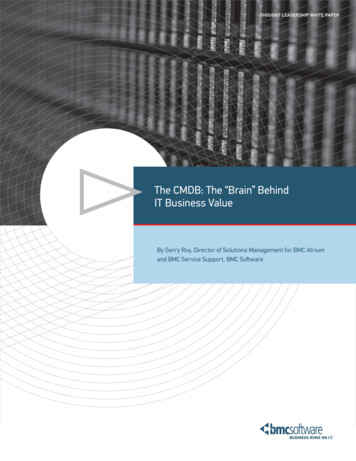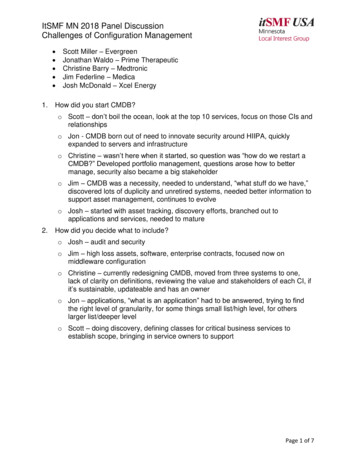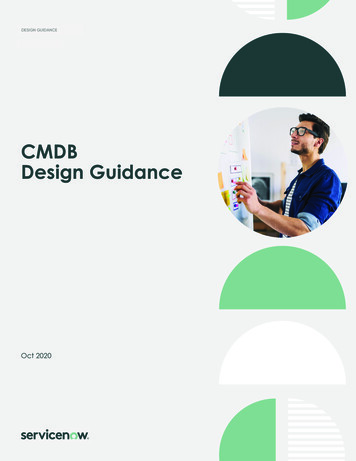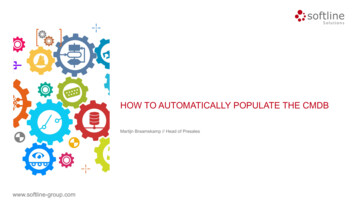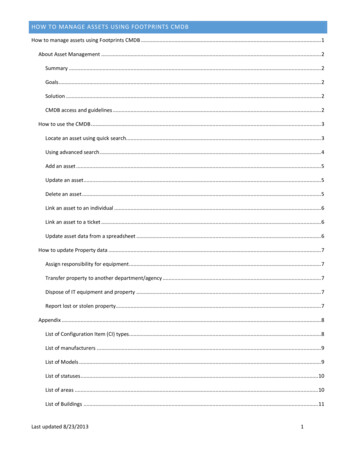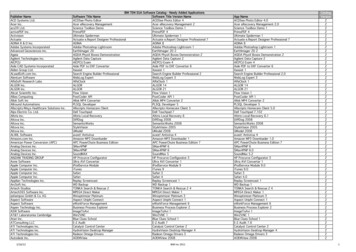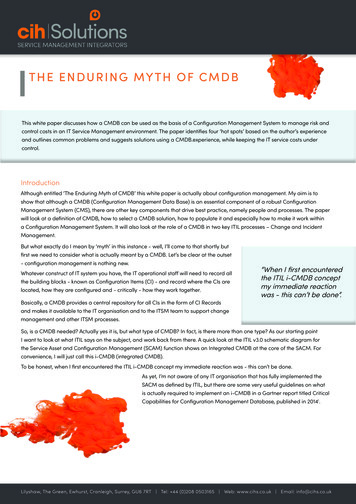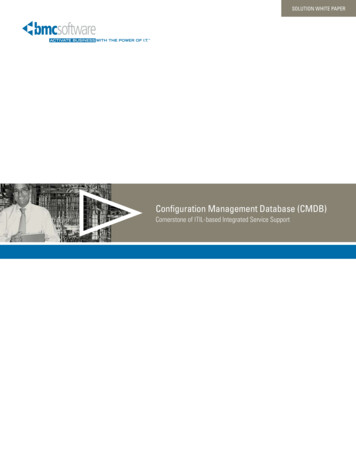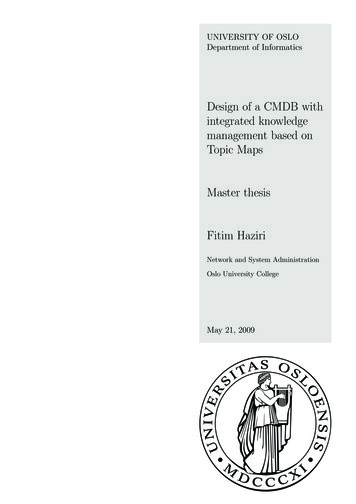
Transcription
UNIVERSITY OF OSLODepartment of InformaticsDesign of a CMDB withintegrated knowledgemanagement based onTopic MapsMaster thesisFitim HaziriNetwork and System AdministrationOslo University CollegeMay 21, 2009
Design of a CMDB with integrated knowledgemanagement based on Topic MapsFitim HaziriNetwork and System AdministrationOslo University CollegeMay 21, 2009
AbstractConfiguration management databases have gained popularity in enterprisesdue to their role in providing efficient IT Resource and Service Management.Enterprises are becoming more competitive through increasing of resource utilization to support their business services. Existing configuration managementdatabase implantations are known to have serious problems, introducing security and maintenance issues. They use a centralized approach implementedvia a complex logical database model. This complexity reduces the possibilityfor enterprises to achieve competitive advantage. Apart from this, implementing such a complex model requires time.There is room for a new logical database model. Cfengine’s approach tological database is not as a traditional inventory, but rather as a knowledgebase semantic web of information that connects various aspects of configuration management. The thesis considers designing of a logical database model,and its topic map model for Cfengine 3, which is a machine-learning approach.The developed model is characterized of being easily manageable, easy to implement, extensible, and optimized for updating process.
AcknowledgementsI am grateful for the teaching, encouragement, guidance, and support of mysupervisor Professor Mark Burgess. I want to thank Steve Pepper for topicmaps ontology overview, and Professor Alva L. Couch for his comments onmy thesis work. Thanks to Associate Professor Harek Haugerud and KyrreBegnum for beneficial discussions.A special thanks to my family for support and encouragement.The project idea of designing a Semantic CMDB originates from ProfessorMark Burgess.i
Contents1Introduction1.1 Motivation and research questions . . . . . . . . . . . . . . . . .1.2 Overview of the Thesis . . . . . . . . . . . . . . . . . . . . . . . .2Background and literature2.1 HP CMDB Architecture . . . . . . . . . . . . .2.1.1 Discovery process . . . . . . . . . . . .2.1.2 Passive discovery . . . . . . . . . . . . .2.1.3 Active discovery . . . . . . . . . . . . .2.1.4 Assessment of agentless model . . . . .2.1.5 HP CMDB Visualization and mapping .2.1.6 Federation . . . . . . . . . . . . . . . . .2.2 Cfengine . . . . . . . . . . . . . . . . . . . . . .2.3 IBM CMDB Architecture . . . . . . . . . . . . .2.4 BMC Atrium CMDB . . . . . . . . . . . . . . .2.4.1 Web services . . . . . . . . . . . . . . . .2.4.2 Summary . . . . . . . . . . . . . . . . .3.Comparison of topic maps and entity relation databases3.1 What is ontology ? . . . . . . . . . . . . . . . . . . . . . . . . . .3.2 The topic map model . . . . . . . . . . . . . . . . . . . . . . . . .3.2.1 Topics . . . . . . . . . . . . . . . . . . . . . . . . . . . . .3.2.2 Topic types . . . . . . . . . . . . . . . . . . . . . . . . . .3.2.3 Association . . . . . . . . . . . . . . . . . . . . . . . . . .3.2.4 Occurrences . . . . . . . . . . . . . . . . . . . . . . . . . .3.2.5 Symbiosis between Promise Theory and Topic Map models3.2.6 Hierarchy and topic maps . . . . . . . . . . . . . . . . .3.2.7 Extracting data from relational databases and topic maps193.2.8 Navigation . . . . . . . . . . . . . . . . . . . . . . . . . .3.2.9 Labeling of topics and synthetic keys . . . . . . . . . . .3.2.10 Storing of topic maps . . . . . . . . . . . . . . . . . . . . .3.2.11 Strengths of topic maps model . . . . . . . . . . . . . . .3.2.12 Ability to link topics to each other in
HP implements only a subset of CIM, and its core model called Universal CMDB supports more than 200 classes. Mean-while, IBM widely adopts CIM as its base model. IBM's version is referred to as the Common Data Model (CDM). It provides about 1000 classes, subclasses,

